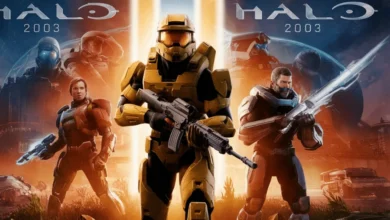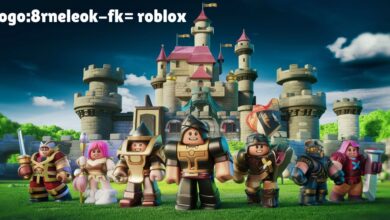Halo (2003) Game Icons Banners Evolution

When “Halo: Combat Evolved” launched in 2001, it not only set a new precedent for first-person shooters but also cultivated a robust fanbase eager to dive into its expansive universe. By 2003, the Halo community was bustling, brimming with halo (2003) game icons banners enthusiasts who not only played the game but also contributed to its culture through artistic expressions. Among these contributions were the game icons and banners that players used to personalize their gaming experience and express their allegiance within the Halo universe.
The Role of Game Icons Banners in Player Identity
Game icons and banners in “Halo: Combat Evolved” served as more than mere decorative graphics; they were a form of personal insignia for players. These elements allowed players to showcase their accomplishments, allegiance to certain factions within the game, or simply their creative flair. Each icon and banner carried with it a story of personal achievement and community belonging. As players gathered in lobbies, these icons halo (2003) game icons banners and banners provided a visual snapshot of who they were as gamers—competitive, collaborative, or casual.
Design and Aesthetic of Halo Icons and Banners
The design of these game icons and banners was heavily influenced by the rich lore and aesthetic of the Halo universe. Icons often featured motifs from the game such as the iconic Master Chief helmet, Covenant vehicles, or the UNSC (United Nations Space Command) insignia. Banners frequently depicted landscapes from the Halo ringworld or scenes from key battles. The color schemes were usually bold and striking, designed to stand out on any screen, enhancing the game’s futuristic feel.
Community and Customization
The customization of these icons and banners was not just about personalization but also about fostering a sense of community. Players would often create or download custom icons and banners that resonated with their clan’s identity or their own personal brand within the game. This customization extended the gameplay experience beyond the console, as players engaged in forums and community sites, sharing their designs and downloading new ones, thus continuously evolving the game’s visual and social landscape.
Introduction to Icons and Banners in Halo
Icons and Banners: The Emblem of Identity in Halo
In the world of Halo, icons and banners are not just aesthetic additions; they serve as crucial elements of player identity and interactivity. By allowing players to select or create distinct icons and banners, Halo provided a unique way for individuals to express themselves within the game. These elements became symbols of prowess, allegiance, and personal style, contributing significantly to the game’s community dynamics and the overall multiplayer experience.
1. The Symbolic Power of Halo Game Icons
Icons in Halo function as personal emblems, each one telling a silent story about the player behind the screen. Whether showcasing rank, special achievements, or allegiance to a particular group within the game, these icons serve as a quick reference to a player’s experience and expertise.
2. Banners as Community Builders
Banners extend the personal narrative by providing a broader canvas to display player identity. Often used by clans and groups, banners can signal unit cohesion or competitive spirit, acting as virtual flags under which players rally during multiplayer sessions.
3. The Visual Language of Halo
Each icon and banner in Halo is crafted with specific symbolism drawn from the game’s lore and aesthetic. This visual language helps reinforce the game’s thematic elements and deepens players’ immersion by integrating story elements directly into the interface.
4. Customization and Creativity
The ability to customize these icons and banners opens up a realm of creativity, allowing players to modify and adapt their virtual representations. This feature not only enhances personal engagement but also encourages a dynamic interchange among the community as players share and discuss their designs.
5. Legacy of Icons and Banners in Halo
The ongoing influence of Halo’s approach to player halo (2003) game icons banners representation through icons and banners can be seen in many modern games, which adopt similar strategies to bolster community interaction and personal expression. Halo’s system pioneered a shift towards more personalized and socially integrated gaming experiences.
2003 Evolution in Halo Game Icons and Banners
Introduction to 2003 Evolution in Halo Game Icons and Banners
The year 2003 marked a significant evolution in the design and application of game icons and banners within the Halo series. This period saw enhancements in graphics technology and community engagement tools, which allowed for more detailed and expressive icons and banners that enhanced the multiplayer experience.
1. Technological Advancements and Icon Evolution
Advancements in graphics technology around 2003 allowed developers to create more detailed and visually appealing icons and banners. These enhancements made the icons not only more distinctive but also more integral to the gaming interface.
2. Increasing Customization Options
As the community grew, so did the demand for more customization options. The evolution in 2003 responded by offering a wider variety of icons and banners, each adaptable to player preferences, which increased the game’s appeal and longevity.
3. Integration of Community Feedback
Feedback from players played a critical role in shaping how icons and banners evolved in 2003. Developers took cues from the community to design elements that were more aligned with player expectations and desires, making them more than just decorative halo (2003) game icons banners features.
4. The Role of Banners in Competitive Play
During this period, banners became particularly significant in competitive play. They were used not only to signify team membership but also to intimidate and challenge rival teams, adding a psychological layer to the game.
5. Archiving and Sharing: A New Social Dynamic
With the rise of online forums and fan sites, players began archiving and sharing their custom icons and banners, leading to a burgeoning digital culture around Halo’s visual elements. This sharing encouraged continuous evolution and innovation within the community.
Icons and Banners Trending in Halo
Introduction to Icons and Banners Trending in Halo
As Halo continued to grow in popularity, certain icons and banners became trends within the community, frequently used as markers of elite status or as popular culture references. These trends not only influenced how players interacted with the game but also how they connected with each other socially.
1. The Rise of Iconic Symbols
Certain symbols, like halo (2003) game icons banners the Master Chief’s helmet or the emblem of the UNSC, became iconic within the community. Their widespread use underscored their importance not just within the game’s narrative but also within the player ecosystem.
2. Memetic Banners: The Birth of an In-Game Meme Culture
Some banners gained popularity for their humorous or meme-worthy content, spreading rapidly through the player base. This not only added a layer of humor to the game but also helped in knitting the community closer together through shared inside jokes.
3. Seasonal and Event-Driven Trends
Special events and game updates often introduced temporary icons and banners, creating periodic trends that players eagerly anticipated and celebrated. These elements helped maintain engagement by providing fresh content in sync with real-world events.
4. Influencer and Streamer Customizations
As streaming culture intersected with gaming, popular influencers and streamers began showcasing their custom icons and banners, which often set trends within the broader community. Their choices influenced the preferences of their viewers, guiding the popularity of certain designs.
5. Evolving Trends: Reflecting the Changing Dynamics of the Game
As the game evolved, so did the trends in icons and banners, reflecting new gameplay features, expansions, and player demographics. This evolution kept the game’s visual culture vibrant and relevant to its audience.
Guide to Create Custom Game Halo Icons and Banners
Introduction to Creating Custom Game Halo Icons and Banners
Creating custom game icons and banners in Halo allows players to truly personalize their gaming experience. This guide provides a foundational understanding of how to craft these elements, offering a way for players to express their individuality and enhance their online presence.
1. Understanding the Basics: Tools and Templates
Beginners looking to create their icons and banners need to familiarize themselves with the basic tools and templates available. This includes understanding image sizes, formats, and how to use graphic design software effectively.
2. Design Principles for Effective Icons
Creating effective icons involves more than just aesthetic appeal; it requires understanding design principles such as balance, contrast, and symbolism. This section would delve into these aspects, providing a structured approach to icon design.
3. Crafting Banners: A Narrative Approach
Banners offer more space and, consequently, more creative freedom. This section teaches how to craft banners that tell a story or convey a message, integrating narrative elements into the design process.
4. Community Resources and Collaboration
Leveraging community resources, such as forums and design templates shared by other players, can greatly enhance the creation process. Collaboration with other community members can also provide feedback and ideas that improve the quality of the designs.
5. Sharing and Showcasing Your Designs
Once the icons and banners are created, sharing them with the Halo community not only showcases the creator’s work but also contributes to the evolving culture of the game. This section would guide on the best practices for sharing and protecting digital artwork online.
Legacy and Influence on Modern Gaming
The legacy of Halo’s game icons and banners extends beyond nostalgia; it laid the groundwork for user customization in gaming. Today, many games feature extensive customization options for player avatars and user interfaces, a concept that was once pioneered by communities like Halo’s. These early instances of player-driven customization have influenced how modern games consider community interaction and player identity as core aspects of the gaming experience.
Conclusion
The halo (2003) game icons banners from “Halo: Combat Evolved” are a testament to the game’s impact not only as a revolutionary first-person shooter but also as a catalyst for community engagement and personal expression within gaming. As new generations discover Halo, the original icons and banners remain a beloved reminder of the games pioneering role in shaping the interactive and communal aspects of modern gaming. They underscore the importance of visual identity in the virtual world, proving that even the smallest elements can significantly enhance the gaming experience.
FAQs: Halo (2003) Game Icons and Banners
1. What are game icons and banners in Halo (2003)?
- Game icons and banners are customizable visual elements that represent player achievements and affiliations within the game.
2. How did Halo (2003) game icons and banners enhance player experience?
- These visual elements allowed players to personalize their profiles, fostering a sense of identity and community among gamers.
3. Can players still create custom icons and banners for Halo (2003)?
- Yes, players can create custom icons and banners using third-party software and community-shared resources.
4. Were there any special icons and banners released for events in Halo (2003)?
- Yes, special icons and banners were often released during updates and community events to celebrate new content and achievements.
5. What impact did Halo (2003) game icons and banners have on future games?
- They set a precedent for player customization, influencing how future games incorporate user-generated content and community engagement tools.



